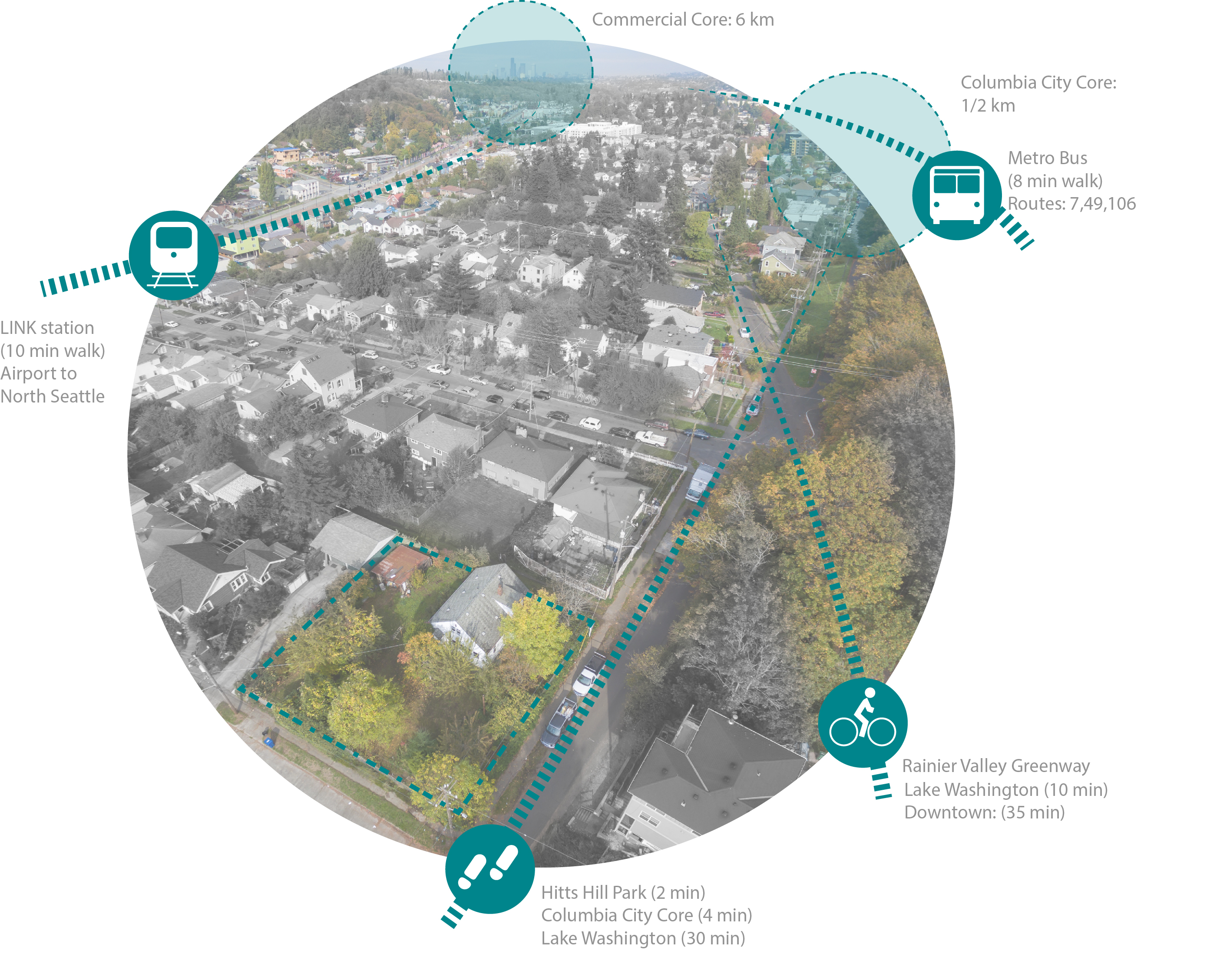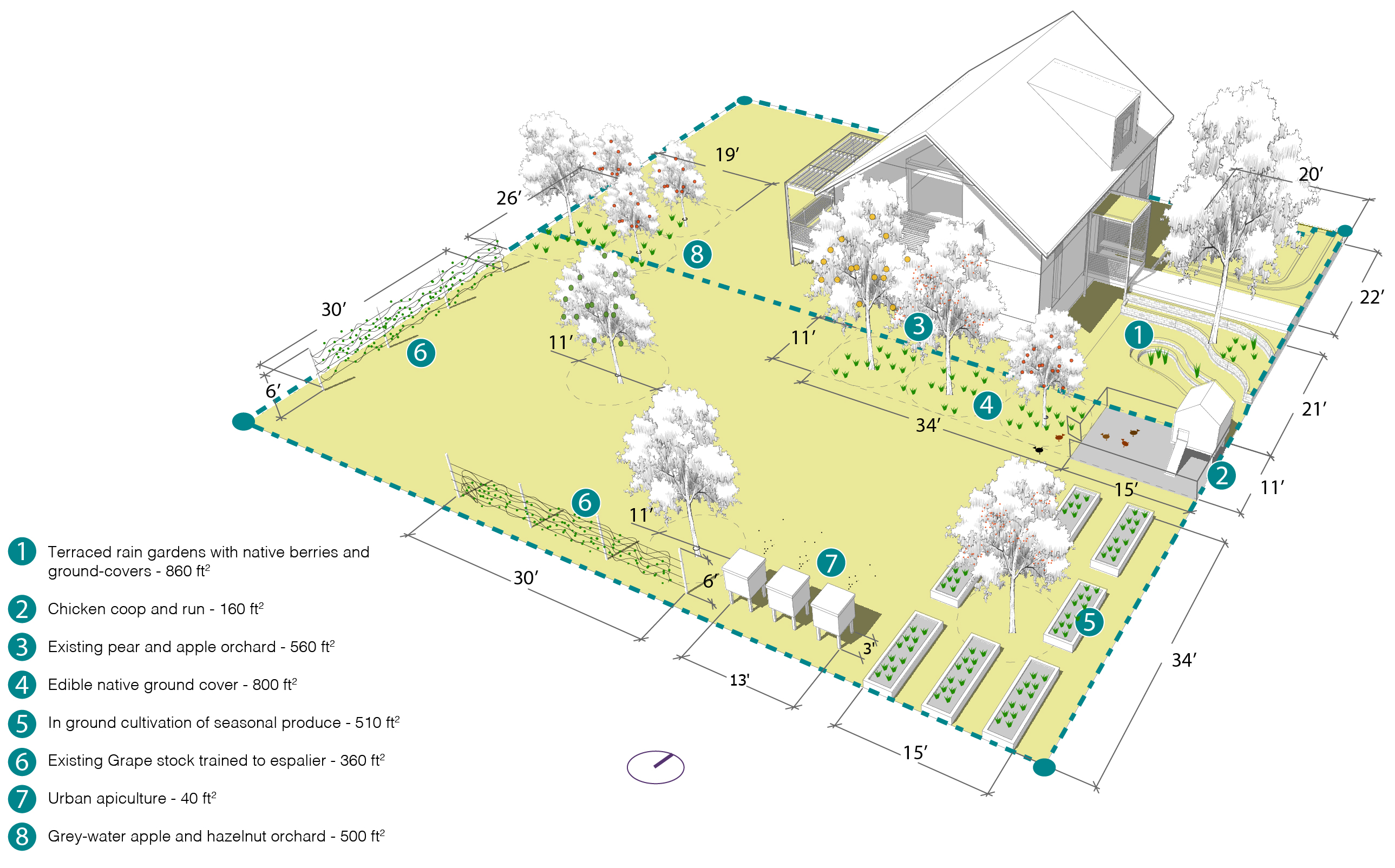
Human Powered Lifestyle
We chose the development site of Homestead Remade primarily based on the ability to build a project within a thriving neighborhood core that would reduce the occupants transportation-related environmental impacts. Providing a means to access daily services either by foot, bicycle or by alternative modes of mass transit will encourage a compact, connected community that supports a productive and rich lifestyle.
Feeding the Family
In the early 1900's the collection of stores known as Columbia City were a train ride five miles Southeast of the downtown core of Seattle. It was here in the Rainier Valley that individual landowners saw the potential for profitable residential development. Many new communities were parceled off and sold to eager homesteaders who could afford the lower prices of this close but interurban housing.
Homestead Remade sits on one of those historic parcels where the land held as much significance as the home that was built upon it. In the early 1900's this land grew pear and apple trees providing residents a practical connection to their place. Urban agriculture is an integral component to our project. Building on the existing sites fruit trees, Homestead Remade will re-establish a tie between humans and their nourishment, and reconnect its community to the land
The Living Building Challenge takes the stance that no truly sustainable community can rely on globally sourced food production, therefore mandatory agricultural requirements are set for all projects. In addition, Single-family homes need to demonstrate a capacity to store at least a two-week supply of food. Using the projects Floor Area Ratio (FAR) as a basis for calculation, Homestead Remade integrates opportunities for urban agriculture on it's site turning 3,600 square feet, more than 35% of the project area, into traditional in-ground cultivation of seasonal produce, tree-based food production, native plantings of edible shrubs and ground-covers and livestock areas for chickens and bees.








